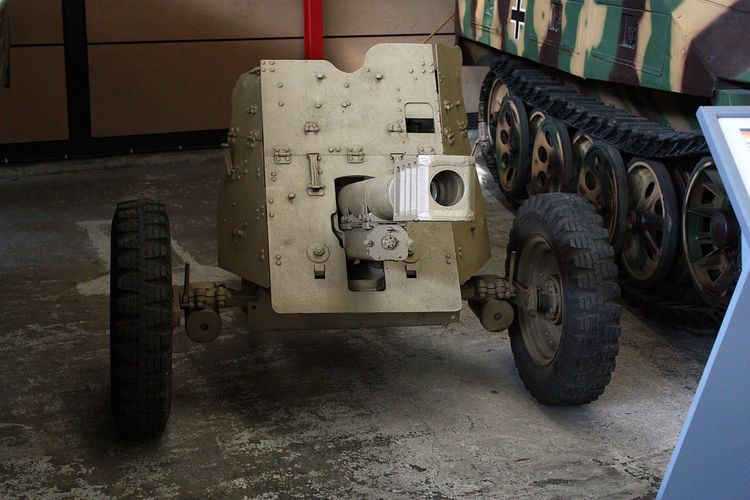Used by Nazi Germany Weight 510 kg (1,120 lb) | Place of origin Nazi Germany No. built 1,304 Shell 5.45 kg (12.0 lb) | |
 | ||
The 7.5 cm Infanteriegeschütz 37 (7.5 cm IG 37) was an infantry support gun, used by Germany, during World War II. The guns were originally designated 7.5 cm PaK 37. The IG 37s were manufactured, beginning in late 1944, from carriages of 3.7 cm Pak 36s (and the nearly identical Soviet 3.7 cm PaK 158(r)) and a barrel designed originally for the IG 42 infantry support gun. As an anti-tank weapon it used a hollow charge shell with 0.5 kg of explosives to penetrate up to 85 mm with a v0 of 395 m/s. The first 84 guns were delivered in June 1944. By the end of the war 1,304 guns were operational.
While the gun carriage was an old design, the gun itself was a new design created by Krupp; though the design had been shelved at the time of its conception. The gun had two distinctive features; first was the large four-baffle muzzle brake and the second was the vertical sliding block breech that was considered unusual for a Krupp designed gun. The breech operated in a semi-automatic fashion; once the gun was fired the breech block would open and eject the spent casing and remained open to allow for rapid reloading. The breech would then be closed once the next round was loaded and the gun was then ready to fire.
